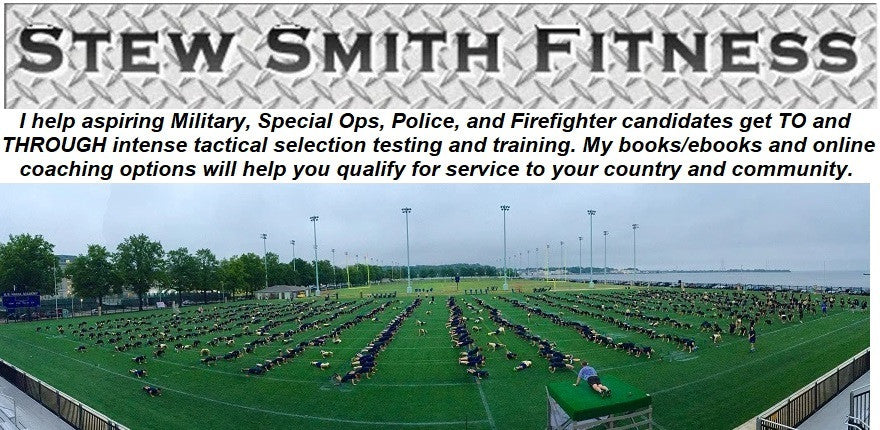Recently, I was invited to take part in some recruit fire fighting training down at the Mississippi Fire Academy. The instructors are veteran fire fighters and teachers who train every fire fighter in the state of Mississippi as well as many from around the nation. This facility is only one of a few in the nation that has training programs for state recruits to advanced fire fighters and other Homeland Security hazardous materials training.
I was honored and excited to attend some real fire fighting training, as I have always revered a person who could run into a burning building and save a life and fight a fire. I was also asked to help the instructors develop / fine tune a fitness curriculum for their recruits as well as assist in developing a program for the Fire Fighters to teach other Fire Fighters how to create in-house fitness programs.
When I met Class 111 and 112 in the morning, it was clear to see that these folks varied in age as well as in fitness levels. In fact, the ages ranged from early 20’s to 56 years old. So, part of my job was to show how to workout with a large group of varying ages / fitness levels and not hurt the lower level and not be too easy on the advanced levels of fitness.
Here is the workout that we did. We focused on techniques of running, breathing, and pacing ourselves for the 60-70 minute workout. See the links for pictures and details of most of the exercises.
Jog ½ mile easy Running Tips - Focus on Breathing
Stretch legs / arms
Repeat 5 times
Jumping Jacks - 10
Toe touch / down dog into pushups position - hold 10 seconds
Pushups - 10
Reverse squat thrust to standing
Stretch / Arms / Legs
Run ¼ mile easy pace Running with leg workouts
Lunges - 10/leg while walking
Run ¼ mile fast pace (near sprint pace)
Do PT Cycle #2:
Run ¼ mile fast pace (winning group loop back to slow runners and push to run faster
Lunges - 10/leg
Run 1/4 mile fast pace
Do PT cycle #3
Run ¼ mile fast pace and continue up 6 flights of stairs
Cooldown jog ¼ mile easy pace and stretch…
This workout was pretty challenging and I am sure made a few of them sore in the legs. The reason I focused on leg pt as well as core workouts is because a recruit firefighter has to get used to lugging around 45-50 lbs of gear plus pulling hoses while on your hands and knees. These workouts will help you with the strength, stamina, endurance, and ability to quickly recover after moments of exertion.
One thing I personally took away from the training is that the Fire Fighter gets his / her body conditioned to the gear and the heat. I have been in desert training, grew up in the South on a farm, played sports in hot and humid weather BUT NEVER have I been so hot as I was in these burn buildings.
I have always respected Fire Fighters. In fact, I make my son go up to anyone we see and shake their hand and say “Thanks for protecting us.” But I never truly knew how much I needed to say that until I was in their gear, moving hose, feeling 1000 degree heat of a house. It was simply amazing.
As I have always said - the human body is an incredible adaptable machine and it will adapt to anything you throw at it. Hot, cold, running, swimming, weights, and any manual or white collar labor - your body will adapt to your environment and survive it better the next time. A great example of that is I know what cold is as seen on Nat Geo Fight Science Show, but HOT is a whole new animal and I could not hang with the instructors for 30-40 minutes at a time in those burn buildings.
In a matter of 20 minutes I lost about 8 lbs of sweat. After time, the body adapts to that kind of heat and will help you conserve your water to some degree, but after it is all over it is crucial to hydrate with water as well as an electrolyte mixture. I know after 100 degree workout days, I find comfort after pounding some water and eating some chicken noodle soup as it is loaded with sodium and potassium. Top it off with some bananas for extra carb replacement and potassium and it will help you recover for the next day of profuse sweating. Do not forget to eat your normal meal too. That is just a supplement to recover from heat exposure and hard work.
Thanks to the Mississippi instructor staff for the opportunity to learn what a Fire Fighter does when actually fighting fires. This will help me create better maintenance programs for active Fire Fighters and hopefully prevent the number one cause of death to a Fire Fighter - heart attacks! And a special thanks to the classes of 111 and 112 for choosing to serve our communities as Fire Fighters. There is no job more rewarding than saving a life. Thanks and stay fit!!
See Recruit Fire Fighter Workout for acing the CPAT as well as the Fire Fighting Academy fitness standards.
